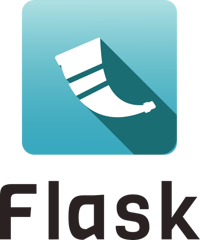Make the Project Installable¶
Making your project installable means that you can build a wheel file and install that in another environment, just like you installed Flask in your project’s environment. This makes deploying your project the same as installing any other library, so you’re using all the standard Python tools to manage everything.
Installing also comes with other benefits that might not be obvious from the tutorial or as a new Python user, including:
Currently, Python and Flask understand how to use the
flaskrpackage only because you’re running from your project’s directory. Installing means you can import it no matter where you run from.You can manage your project’s dependencies just like other packages do, so
pip install yourproject.whlinstalls them.Test tools can isolate your test environment from your development environment.
Note
This is being introduced late in the tutorial, but in your future projects you should always start with this.
Describe the Project¶
The pyproject.toml file describes your project and how to build it.
pyproject.toml¶[project]
name = "flaskr"
version = "1.0.0"
dependencies = [
"flask",
]
[build-system]
requires = ["setuptools"]
build-backend = "setuptools.build_meta"
The setuptools build backend needs another file named MANIFEST.in to tell it about
non-Python files to include.
MANIFEST.in¶include flaskr/schema.sql
graft flaskr/static
graft flaskr/templates
global-exclude *.pyc
This tells the build to copy everything in the static and templates directories,
and the schema.sql file, but to exclude all bytecode files.
See the official Packaging tutorial and detailed guide for more explanation of the files and options used.
Install the Project¶
Use pip to install your project in the virtual environment.
$ pip install -e .
This tells pip to find pyproject.toml in the current directory and install the
project in editable or development mode. Editable mode means that as you make
changes to your local code, you’ll only need to re-install if you change the metadata
about the project, such as its dependencies.
You can observe that the project is now installed with pip list.
$ pip list
Package Version Location
-------------- --------- ----------------------------------
click 6.7
Flask 1.0
flaskr 1.0.0 /home/user/Projects/flask-tutorial
itsdangerous 0.24
Jinja2 2.10
MarkupSafe 1.0
pip 9.0.3
setuptools 39.0.1
Werkzeug 0.14.1
wheel 0.30.0
Nothing changes from how you’ve been running your project so far.
--app is still set to flaskr and flask run still runs
the application, but you can call it from anywhere, not just the
flask-tutorial directory.
Continue to Test Coverage.
